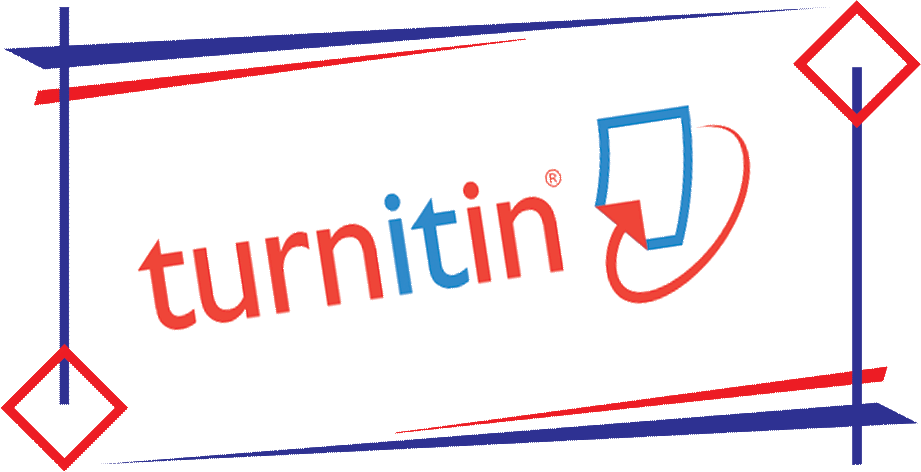Implementing UTAUT Model to Analyze Consumer Behaviour in Mobile Recycling Application
Abstract
Full Text:
PDFReferences
[1] A. Aprilia, “Waste Management in Indonesia and Jakarta: challenges and way forward,” Proceedings of the 23rd ASEF Summer University, Virtual, vol. 20, 2021.
[2] D. Bonino, M. T. D. Alizo, C. Pastrone, and M. Spirito, “WasteApp: Smarter waste recycling for smart citizens,” in 2016 International Multidisciplinary Conference on Computer and Energy Science (SpliTech), 2016, pp. 1–6. doi: 10.1109/SpliTech.2016.7555951.
[3] S. Böhm, B. Igler, R. Morales, F. Sand, and A. Ertan, “Sauberes wiesbaden app: introducing mobile e-participation for a clean city project in Germany,” in Proceedings of the 14th International Conference on Mobile and Ubiquitous Multimedia, in MUM ’15. New York, NY, USA: Association for Computing Machinery, 2015, pp. 426–429. doi: 10.1145/2836041.2841222.
[4] İ. Dursun, E. Tümer Kabadayı, and H. Yürüyen, “Roles of mobile applications in removing barriers to individual recycling: Case of Türkiye,” Environmental Research and Technology, vol. 7, no. 1, pp. 97–107, 2024, doi: 10.35208/ert.1317616.
[5] PT Tjatra Yasa Indonesia, “DUITIN - Gerakan Daur Ulang.” Accessed: May 11, 2024. [Online]. Available: https://duitin.id/
[6] Kementerian Lingkungan Hidup dan Kehutanan, “SIPSN - Sistem Informasi Pengelolaan Sampah Nasional.” Accessed: May 11, 2024. [Online]. Available: https://sipsn.menlhk.go.id/sipsn/
[7] N. Ancely, “Lewat Duitin, Masyarakat Bisa Daur Ulang Sampah Sekaligus Panen Cuan.” Accessed: May 11, 2024. [Online]. Available: https://www.kompas.tv/video/257227/lewat-duitin-masyarakat-bisa-daur-ulang-sampah-sekaligus-panen-cuan
[8] S. N. Afifah, “Komunikasi Lingkungan Melalui Duitin Indonesia (Studi Deskriptif Kualitatif Pada Aplikasi Duitin),” Mar. 2023.
[9] A.-C. Lidia, R.-T. Julio, D. S.-P. Petra, and P.-J. Rafael, “How to Encourage Recycling Behaviour? The Case of WasteApp: A Gamified Mobile Application,” Sustainability, vol. 10, no. 5, 2018, doi: 10.3390/su10051544.
[10] V. Venkatesh, J. Thong, and X. Xu, “Consumer Acceptance and Use of Information Technology: Extending the Unified Theory of Acceptance and Use of Technology,” MIS Quarterly, vol. 36, pp. 157–178, Mar. 2012, doi: 10.2307/41410412.
[11] O. Isaac, Z. Abdullah, A. H. Aldholay, and A. Abdulbaqi Ameen, “Antecedents and outcomes of internet usage within organisations in Yemen: An extension of the Unified Theory of Acceptance and Use of Technology (UTAUT) model,” Asia Pacific Management Review, vol. 24, no. 4, pp. 335–354, Dec. 2019, doi: 10.1016/J.APMRV.2018.12.003.
[12] B. M. Izzati, “Analysis of Customer Behavior in Mobile Food Ordering Application Using UTAUT Model (Case Study: GoFood Application),” International Journal of Innovation in Enterprise System, vol. 4, no. 01, pp. 23–34, 2020, doi: 10.25124/ijies.v4i01.45.
[13] P. Kotler and K. L. Keller, Marketing Management. Pearson Prentice Hall/Pearson Education International, 2009. [Online]. Available: https://books.google.co.id/books?id=z3h_NAEACAAJ
[14] W. Febriantoro, “KAJIAN DAN STRATEGI PENDUKUNG PERKEMBANGAN E-COMMERCE BAGI UMKM DI INDONESIA,” Jurnal MANAJERIAL, vol. 17, p. 184, Jul. 2018, doi: 10.17509/manajerial.v17i2.10441.
[15] I. Ida, S. Zaniarti, and G. Wijaya, “FINANCIAL LITERACY, MONEY ATTITUDE, DAN FINANCIAL MANAGEMENT BEHAVIOR GENERASI MILENIAL,” Jurnal Muara Ilmu Ekonomi dan Bisnis, vol. 4, p. 406, Oct. 2020, doi: 10.24912/jmieb.v4i2.9144.
[16] J. Cuello and J. Vittone, Designing Mobile Apps. José Vittone, 2013. [Online]. Available: https://books.google.co.id/books?id=nQBJAQAAQBAJ
[17] A. A. Razi, I. R. Mutiaz, and P. Setiawan, “PENERAPAN METODE DESIGN THINKING PADA MODEL PERANCANGAN UI/UX APLIKASI PENANGANAN LAPORAN KEHILANGAN DAN TEMUAN BARANG TERCECER,” Demandia : Jurnal Desain Komunikasi Visual, Manajemen Desain, dan Periklanan, vol. 3, no. 02, pp. 219–237, Sep. 2018, doi: 10.25124/DEMANDIA.V3I02.1549.
[18] A. Mavropoulos, M. Tsakona, and A. Anthouli, Mobile Applications & Waste Management: Recycling, Personal Behavor, Logistics. 2013.
[19] V. Venkatesh, M. Morris, G. Davis, and F. Davis, “User Acceptance of Information Technology: Toward a Unified View,” MIS Quarterly, vol. 27, pp. 425–478, Sep. 2003, doi: 10.2307/30036540.
[20] B. Pynoo, P. Devolder, J. Tondeur, J. Van Braak, W. Duyck, and P. Duyck, “Predicting secondary school teachers’ acceptance and use of a digital learning environment: A cross-sectional study,” Comput Human Behav, vol. 27, no. 1, pp. 568–575, Jan. 2011, doi: 10.1016/J.CHB.2010.10.005.
[21] W.-T. Wong and N.-T. N. Huang, “The Effects of E-Learning System Service Quality and Users’ Acceptance on Organizational Learning,” International Journal of Business and Information, vol. 6, Jan. 2011.
[22] E. Abu-Shanab and J. Pearson, “Internet banking in Jordan: The unified theory of acceptance and use of technology (UTAUT) perspective,” J. Systems and IT, vol. 9, pp. 78–97, Aug. 2007, doi: 10.1108/13287260710817700.
[23] T. Zhou, “Understanding users’ initial trust in mobile banking: An elaboration likelihood perspective,” Comput Human Behav, vol. 28, no. 4, pp. 1518–1525, Jul. 2012, doi: 10.1016/J.CHB.2012.03.021.
[24] S. Mardikyan, B. Beşiroğlu, and G. Uzmaya, “Behavioral Intention towards the Use of 3G Technology,” Communications of the IBIMA, Mar. 2012, doi: 10.5171/2012.622123.
[25] W. H. Wu, Y. C. Jim Wu, C. Y. Chen, H. Y. Kao, C. H. Lin, and S. H. Huang, “Review of trends from mobile learning studies: A meta-analysis,” Comput Educ, vol. 59, no. 2, pp. 817–827, Sep. 2012, doi: 10.1016/J.COMPEDU.2012.03.016.
[26] B. Marshall, R. Mills, and D. Olsen, “The Role Of End-User Training In Technology Acceptance,” Review of Business Information Systems (RBIS), vol. 12, p. 1, May 2008, doi: 10.19030/rbis.v12i2.4384.
[27] M. Wayne W. LaMorte, “The Theory of Planned Behavior,” Boston University School of Public Health. Accessed: May 11, 2024. [Online]. Available: https://sphweb.bumc.bu.edu/otlt/MPH-Modules/SB/BehavioralChangeTheories/BehavioralChangeTheories3.html
[28] K. Rozenkowska, “Theory of planned behavior in consumer behavior research: A systematic literature review,” Int J Consum Stud, vol. 47, p. n/a-n/a, Jul. 2023, doi: 10.1111/ijcs.12970.
[29] C. Pratiwi, R. Adwiyah, and A. Sasongko, The Ability of Social Entrepreneurs to Solve Their Issues during Covid-19 at Okiagaru Farm, Indonesia. 2022. doi: 10.2991/aebmr.k.211207.022.
[30] F. M. Santos, “A Positive Theory of Social Entrepreneurship,” Journal of Business Ethics, vol. 111, no. 3, pp. 335–351, Dec. 2012, doi: 10.1007/S10551-012-1413-4/METRICS.
[31] S. Abu-Saifan, “Social Entrepreneurship: Definition and Boundaries,” Technology Innovation Management Review, no. February 2012: Technology Entrepreneurship, pp. 22–27, Feb. 2012, Accessed: May 11, 2024. [Online]. Available: https://doaj.org/article/13c56d9474d44cadaaac9a6065234c77
[32] H. Suyatna and Y. Nurhasanah, “Sociopreneurship Sebagai Tren Karir Anak Muda,” Jurnal Studi Pemuda, vol. 6, no. 1, pp. 527–537, Aug. 2018, doi: 10.22146/STUDIPEMUDAUGM.38011.
[33] S. W. Mursalim, “Millennial and Social Entrepreneurship,” in Proceedings of the First International Conference on Administration Science (ICAS 2019), Atlantis Press, Aug. 2019, pp. 232–236. doi: 10.2991/icas-19.2019.48.
[34] Shofiana. Aulia N, “What is Sociopreneur ?. A Sociopreneur or social entrepreneur… | by Aulia Nanda Shofiana | Medium.” Accessed: May 11, 2024. [Online]. Available: https://medium.com/@aulianandashofiana/what-is-sociopreneur-421472598b05
[35] AIContentfy, “The Power of Influencer-Hosted Workshops for Increased Awareness.” Accessed: May 11, 2024. [Online]. Available: https://aicontentfy.com/en/blog/power-of-influencer-hosted-workshops-for-increased-awareness
[36] J. Anderson, P. Schwager, and R. Kerns, “The Drivers for Acceptance of Tablet PCs by Faculty in a College of Business,” Journal of Information Systems Education, vol. 17, Jan. 2006.
[37] S. T. Alharbi, “Trust and Acceptance of Cloud Computing: A Revised UTAUT Model,” in 2014 International Conference on Computational Science and Computational Intelligence, 2014, pp. 131–134. doi: 10.1109/CSCI.2014.107.
[38] D. F. Serben, “The Examination of Factors Influencing Social Media Usage by African American Small Business Owners Using the UTAUT Model.,” 2014. [Online]. Available: https://api.semanticscholar.org/CorpusID:155776821
[39] V. Venkatesh, J. Y. L. Thong, F. K. Y. Chan, P. J.-H. Hu, and S. A. Brown, “Extending the two-stage information systems continuance model: incorporating UTAUT predictors and the role of context,” Information Systems Journal, vol. 21, no. 6, pp. 527–555, Nov. 2011, doi: https://doi.org/10.1111/j.1365-2575.2011.00373.x.
[40] I. Alrajawy, M. Norzaidi, O. Isaac, and A. Mutahar, Mobile Learning in Yemen Public Universities: Factors Influence student’s Intention to Use. 2016.
[41] Y. Guo, “Moderating Effects of Gender in the Acceptance of Mobile SNS - Based on UTAUT Model,” in 2014 International Conference on Management of e-Commerce and e-Government, 2014, pp. 163–167. doi: 10.1109/ICMeCG.2014.41.
[42] Y. Karulkar, B. S. Uppal, and S. Sayed, “Examining UTAUT model to explore consumer adoption in Online Food Delivery (OFD) services,” Pramana, Jul. 2021.
[43] A. A. Alalwan, “Mobile food ordering apps: An empirical study of the factors affecting customer e-satisfaction and continued intention to reuse,” Int J Inf Manage, vol. 50, pp. 28–44, Feb. 2020, doi: 10.1016/J.IJINFOMGT.2019.04.008.
[44] D. B. Mccoach and J. Adelson, “Dealing With Dependence (Part I): Understanding the Effects of Clustered Data,” Gifted Child Quarterly - GIFTED CHILD QUART, vol. 54, pp. 152–155, Mar. 2010, doi: 10.1177/0016986210363076.
[45] J. Hair, G. T. M. Hult, C. Ringle, and M. Sarstedt, A Primer on Partial Least Squares Structural Equation Modeling (PLS-SEM). 2022.
[46] C. Fornell and D. F. Larcker, “Evaluating structural equation models with unobservable variables and measurement error.,” Journal of Marketing Research, vol. 18, pp. 39–50, 1981, [Online]. Available: https://api.semanticscholar.org/CorpusID:168139204
[47] M. Al-Sammarraie, K. Alqasa, and E. Al-Matari, “Technology Adoption and Innovation of E-Government in Republic of Iraq,” Asian Soc Sci, vol. 11, pp. 135–145, Dec. 2014, doi: 10.5539/ass.v11n3p135.
[48] Y.-L. Wu, Y.-H. Tao, and P.-C. YangJ, “Using UTAUT to explore the behavior of 3G mobile communication users,” 2007 IEEE International Conference on Industrial Engineering and Engineering Management, pp. 199–203, 2007, [Online]. Available: https://api.semanticscholar.org/CorpusID:12162326
[49] A. Mutahar, M. Norzaidi, T. Ramayah, L. Putit, O. Isaac, and I. Alrajawy, The Role of Trialability, Awareness, Perceived Ease of Use, and Perceived Usefulness in determining the Perceived Value of Using Mobile Banking in Yemen. 2016.
[50] T. Ramayah and M. Lo, “Impact of shared beliefs on ‘perceived usefulness’ and ‘ease of use’ in the implementation of an enterprise resource planning system,” Management Research News, vol. 30, no. 6, pp. 420–431, Jan. 2007, doi: 10.1108/01409170710751917.
[51] C.-C. Chang, “Library mobile applications in university libraries,” Library Hi Tech, vol. 31, no. 3, pp. 478–492, Jan. 2013, doi: 10.1108/LHT-03-2013-0024.
[52] I. Ajzen, “The Theory of Planned Behavior,” Organ Behav Hum Decis Process, vol. 50, pp. 179–211, Dec. 1991, doi: 10.1016/0749-5978(91)90020-T.
[53] F. Abdullah and R. Ward, “Developing a General Extended Technology Acceptance Model for E-Learning (GETAMEL) by analysing commonly used external factors,” Comput Human Behav, vol. 56, pp. 238–256, Mar. 2016, doi: 10.1016/J.CHB.2015.11.036.
[54] H.-N. Sung, D.-Y. Jeong, Y.-S. Jeong, and J.-I. Shin, “The Relationship among Self-Efficacy, Social Influence,Performance Expectancy, Effort Expectancy, and Behavioral Intention in Mobile Learning Service,” International Journal of u- and e- Service, Science and Technology, vol. 8, pp. 197–206, Sep. 2015, doi: 10.14257/ijunesst.2015.8.9.21.
DOI: https://doi.org/10.18860/mat.v16i1.26930
Refbacks
- There are currently no refbacks.
Copyright (c) 2024 Stephanie Elizabeth Shirley, Joan Santoso, Natalia Kristina

This work is licensed under a Creative Commons Attribution-NonCommercial-ShareAlike 4.0 International License.
The journal is indexed by :
_______________________________________________________________________________________________________________
Editorial Office:
Informatics Engineering Department
Faculty of Science and Technology
Universitas Islam Negeri Maulana Malik Ibrahim Malang
Jalan Gajayana 50 Malang, Jawa Timur, Indonesia 65144
Email: matics@uin-malang.ac.id
_______________________________________________________________________________________________________________
![]()
This work is licensed under a CC-BY-SA 4.0.
© All rights reserved 2015. MATICS , ISSN : 1978-161X | e-ISSN : 2477-2550





